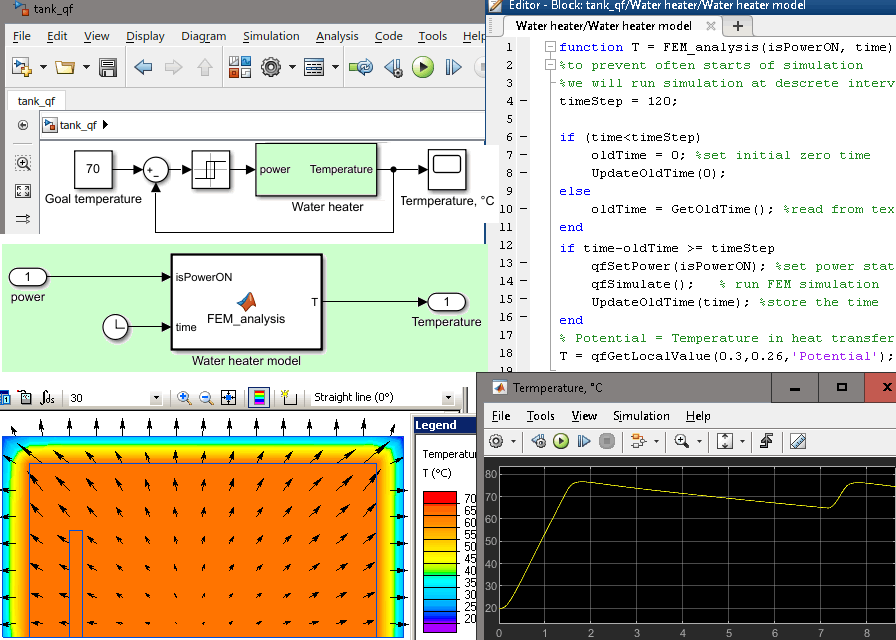Water heater control system simulation in Simulink
QuickField simulation example
Problem Type
Axisymmetric multiphysics problem of Transient heat transfer coupled to Transient heat transfer.
Geometry
Given
Insulation thermal conductivity λ = 0.1 W/K-m,
Initial temperature T0 = 20°C,
Required water temperature T = 70°C (±5°C),
Ambient air temperature 20°C, convection coefficient 3 W/K-m²,
Heater power Q = 2 kW.
Task
Simulate control system operation and make a temperature vs. time plot.
Solution
In QuickField it is possible to connect non-stationary thermal problems and transfer the temperature distribution from one problem to another one. Coupled problems share the geometric model file, but can have different data files and simulate different time intervals. So you can create a long chain of problems to simulate series of switching heating/cooling processes.
To implement the control system, two problems were connected in a closed loop: the second problem takes the temperature distribution from the first problem results, and the first problem takes the temperatures from the second problem results. Thus, if both problems are simulated one-by-one, then a certain time interval of the transient thermal process is modelled.
The control system works through the QuickField application programming interface (API) and launches simulation loop, measures the temperature at the end of the cycle, counts the number of cycles passed (total process time), and sets the power source value in the 'heater' block.
Results
Control the workflow in Simulink and plot the temperature vs time.

- Video: Water heater control system simulation in Simulink. Watch on YouTube
00:00 Creating coupled heat transfer problems in QuickField.
17:12 Closed loop of two problems in QuickField.
20:38 Simulink control system review and live operation.
- Download simulation files (files may be viewed using any QuickField Edition).